See the New Times Square New Year's Eve Ball Up Close
Find out how you can take home a piece of the old New Year's Eve ball!


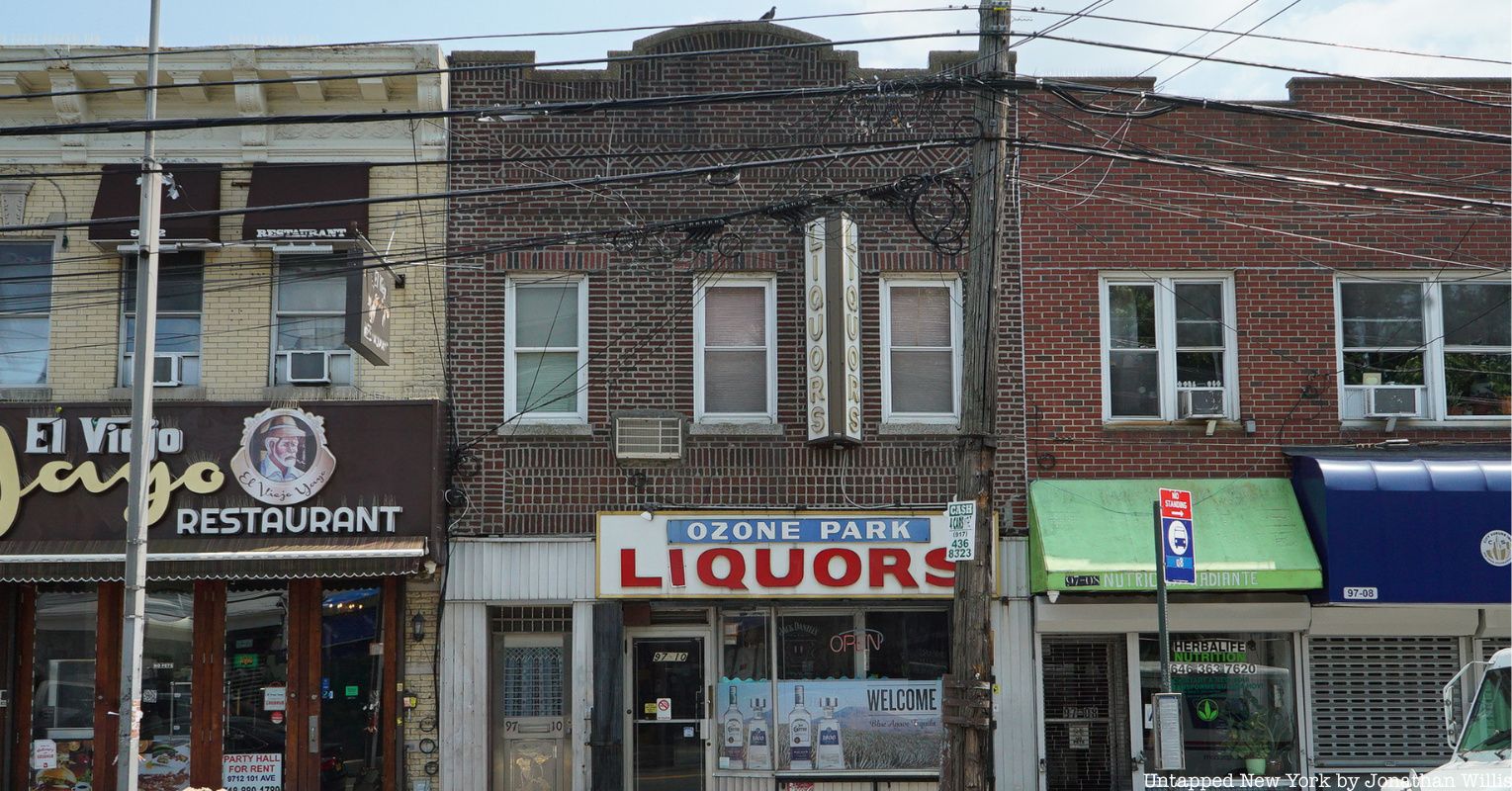
Tucked away between Woodhaven and Howard Beach in the New York City borough of Queens is the neighborhood of Ozone Park. Known for more than just its mystifying name which inspired an album by the band Hollis Brown, Ozone Park is a colorful community full of rich culture, former mafia hangouts, and unique attractions like New York City’s only casino and racetrack. Ozone Park houses 60,000 residents and is the childhood home of many recognizable celebrities. The neighborhood carries a deep history as part of the fabric of Queens dating back to the late 19th century.
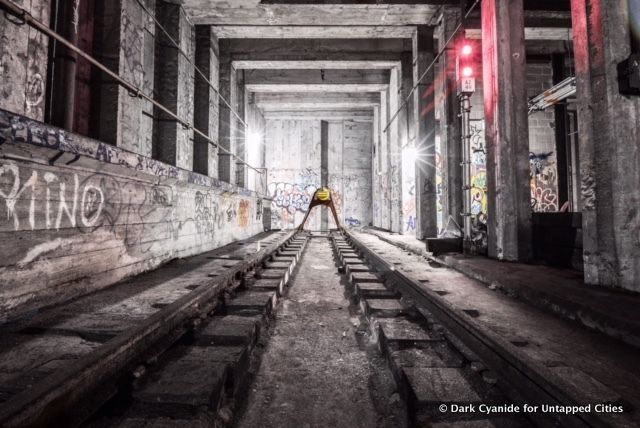
This hidden mystery of Ozone Park is deeply rooted in New York City urban legend. Dubbed the “Roswell” of hidden subway stations by The New York Times, the 76th Street Station supposedly once existed near Pitkin Avenue as an extension of the A Line to 229th Street in Cambria Heights. The plan for the station’s incorporation was ultimately scrapped and never came to be, leaving explorers and subway buffs questioning its fate. The largest mystery of the entire station, however, is that no one is sure if it ever actually existed.
Spotty evidence has surfaced over the years painting tales of the station’s illusive existence. One such story comes from a 2002 post made by a New York Transit Museum tour guide. The post offers a “detailed history” of the station’s 1948 one-month run that ended in a city cover-up, as it had been built by non-union workers. The station was then allegedly sealed off in 1952 and forgotten amongst the sea of other lost NYC subway stations. While this story appears compelling, skeptics couldn’t help but notice it was posted on April Fool’s Day.
The New York Times even dug so deep into the conspiracy when it interviewed former transit worker and police officer Steve Krokowski who swears the station existed. After being questioned online vehemently, Mr. Krokowski donned a safety vest, grabbed a shovel, and attempted to dig below the concrete wall to find the railroad’s remains. He claims to have found a part of the rail’s continuation but his hole caved in, causing him to cease his noble efforts. The stubborn believer’s additional evidence includes the accounts of many who have supposedly seen the station (though many of these people are now unfortunately deceased or uncontactable), and that a light board at the control room in Euclid Avenue Station reportedly had a part labeled “76th Street.” That section of the board has since been hidden under black tape. A transit official named Joe Raskin confirmed to the Times that was true, though he stands by the indisputable fact that there is no written evidence that the station was ever actually built in the first place. Despite these conflicting sides, urban explorers continue to search for the “lost” 76th Street Station in hopes of being the first to unravel its mystery.
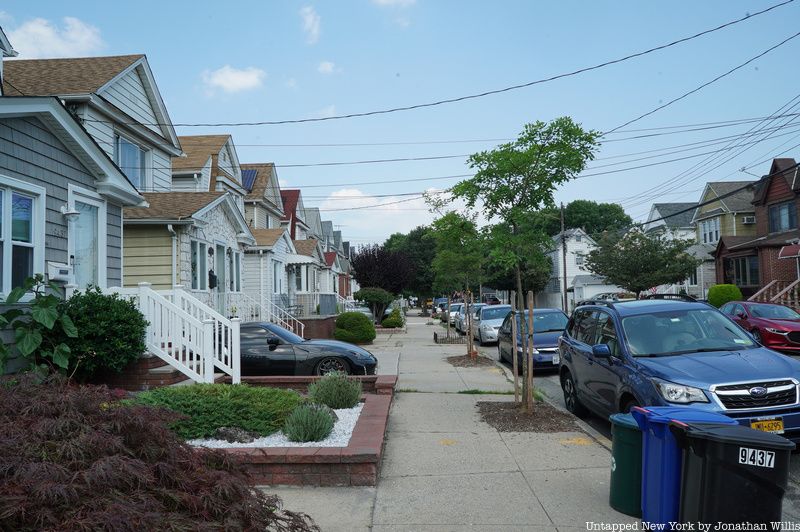
Taken out of context, the name Ozone Park may conjure images of extraterrestrial playgrounds on alien planets, or heat radiating off pools of toxic slime. In today’s modern era, we hear ozone and typically associate the word with harsh chemicals or mysterious substances in the air, like the ozone layer of Earth’s atmosphere. But when Ozone Park, Queens was founded, the word had a much different meaning. As defined on Dictionary.com, ozone has previously been known to relate to “clean bracing air, as found at the seaside.” When the existence of ozone gas was originally discovered in 1840, the harmful properties of the gas were largely unknown.
With this understanding of the word established, in 1882 after the Long Island Railroad built a new nearby station, visionaries Benjamin W. Hitchcock and Charles C. Denton bought up land for development, and Ozone Park was born. The neighborhood’s pivotal marketing point: its close proximity to unlimited ozone. Or, what they really meant, fresh sea air.
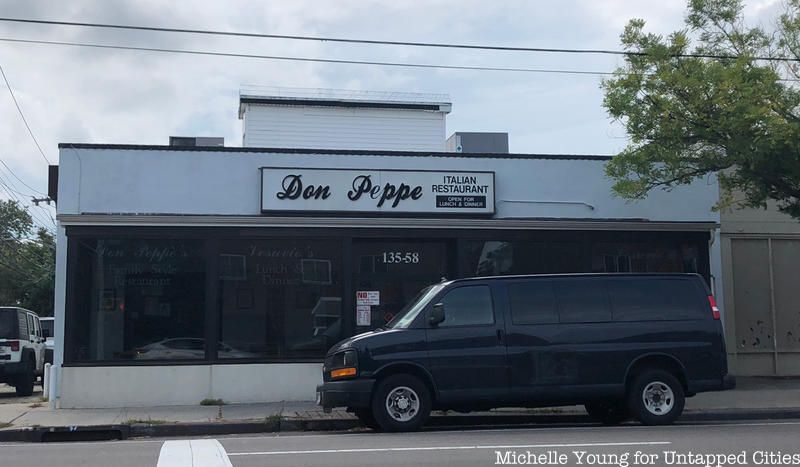
Ozone Park has been the home base for many tied to the New York City mob scene. Don Peppe’s Italian Restaurant located near the Aqueduct Racetrack was allegedly the former hangout spot for Genovese capo Ciro Perrone. The mob boss is rumored to have once had his crew wait outside the restaurant with bats and lead pipes after a waiter spilled a drink on his wife, planning to “handle” the staff after closing. In more recent years Perrone has also been caught there slamming the reality mob show Growing Up Gotti after the feds wiretapped the restaurant.
Speaking of Gotti, the Gambino Crime Family has been one of New York City’s “Five Families” related to the Italian American Mafia scene since the early 20th century. One of the mob organization’s most infamous leaders of was John Gotti, known alternatively as “The Teflon Don” for his ability to prevent charges from “sticking” to him. The Gambino’s headquarters during the prime of Gotti’s reign was in Ozone Park, located at the former Bergin Hunt and Fish Club.
Gotti used to put on an annual Fourth of July fireworks show complete with barbecues and games for kids in front of the club at 98-04 101st Avenue. The neighborhood was so deeply connected to Gotti’s mob presence (many locals were known to alert the Gottis of undercover cops) that after his arrest and subsequent death in 2002, which led to the club’s closure in 2005, many long-time residents reportedly miss the environment the Gambinos brought to Ozone Park. Some even go as far as to say that the neighborhood felt safer in Gotti’s day. While the Bergin Hunt and Fish Club is now long gone, what stands in place of the once iconic crime family’s club is two separate storefronts: a bubble tea shop, and a Christian church.
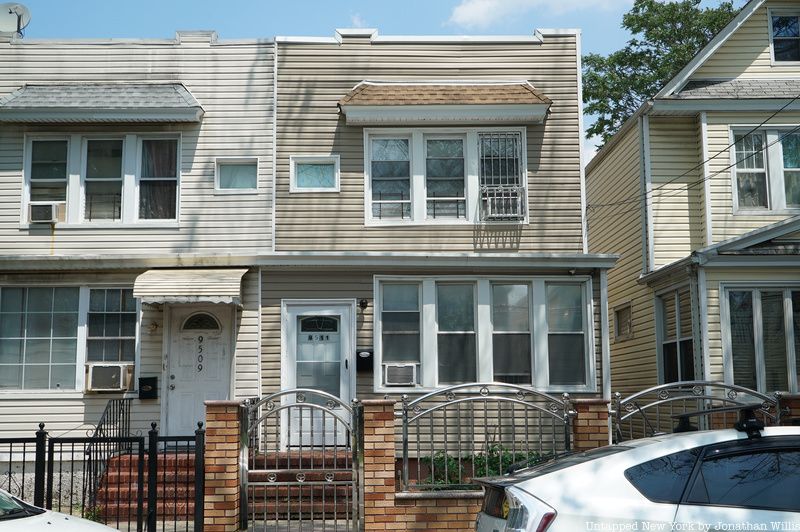
Cyndi Lauper, the woman who revealed the hard-hitting truth with her girls’ night anthem, “Girls Just Wanna Have Fun,” was once an Ozone Park resident. The illustrious ’80s pop singer grew up at 95-11 104th Street with her mother and two siblings after her parents divorced. In an interview with the Wall Street Journal the singer reminisced on the beautiful moments of her time living in the neighborhood, from caring for her grandmother’s garden to painting the walls of her room constantly-changing colors. Ozone Park is also where Lauper established her unique colorful style. Perhaps stemming from her rocky relationship with her step-father, Lauper rebelled and experimented with new hairstyles and clothes until eventually running away from her Ozone Park home to pursue her performing career. She would come to be known for songs like “Time After Time” and “True Colors.” Cyndi Lauper even returned to Ozone Park in 1993 to film a music video in her old neighborhood.
Other famous people who share a past of growing up in Ozone Park include Jack Kerouac and Joe Lo Truglio. Kerouac was a well-known poet and author known most famously for his 1959 novel On the Road. He lived at 133-01 Crossbay Boulevard with his parents in an apartment where he wrote and published his first work “The Town and the City.” Actor Joe Lo Truglio was born in Ozone Park, though he did not live most of his childhood there. Truglio is known for many popular movies and TV shows including Brooklyn Nine-Nine, Wet Hot American Summer, and Pineapple Express.
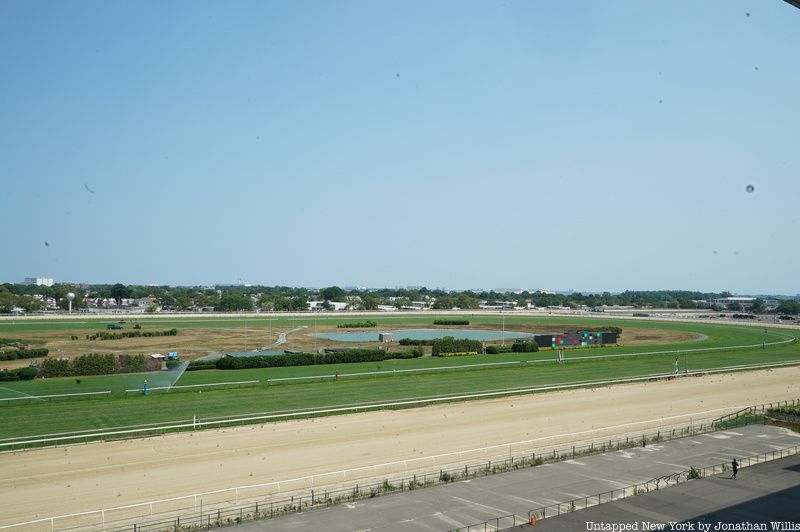
While horses once ruled the streets of New York City as a means of getting around, there is another place horses can still be found in the city today besides Central Park. The Aqueduct Racetrack (known to horse racing aficionados as the Big A) is located in South Ozone Park and takes up an impressive 210 acres. While the original racetrack was opened in 1894, the track was given a grand reopening in 1959 after undergoing a $34.5 million renovation. The new version was decked out in every way imaginable including a new four-tier grandstand, 18 escalators, and even an elevator. The new track also featured 14,000 seats inside air-conditioned restaurants and lounges, all of which gave it the title of being “the world’s most modern and luxurious horse plant” as written by the Associated Press.
The racetrack is such a deeply rooted part of the city that in 1995 the former Pope John Paul II said mass before a monumental crowd of 75,000 onlookers. While the Aqueduct Racetrack may not be on par with Saratoga, the track still gets considerable attention and is considered Saratoga’s blue-collar counterpart. In 2013 the New York Racing Association invested over $18 million in improving the Big A, keeping the track’s long legacy alive in Ozone Park.
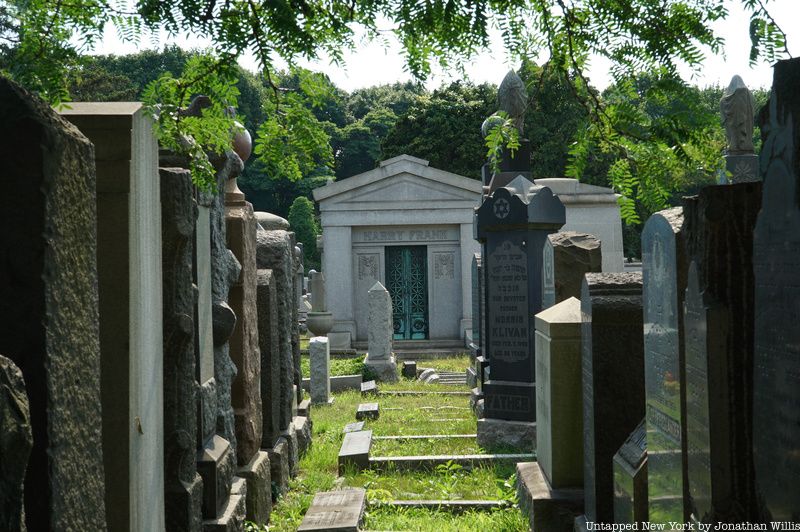
Bayside Cemetery has been the burial site of many members of the New York City Jewish community since 1865. Under the ownership of the Congregation Shaare Zedek, the cemetery stretches across 16 acres with 32,000 graves and dozens of mausoleums. The 19th century saw a massive immigration wave for New York’s Jewish population, resulting in Shaare Zedek’s opportunity to sell exclusive burial rights to the rapidly growing populace of Jewish burial societies, synagogues, and fraternal organizations. Unfortunately, as these organizations began to dwindle over the years with Jews leaving the area, the cost of maintaining the graves fell heavily onto the shoulders of Shaare Zedek. With the cemetery producing no income, there were simply no funds available to upkeep the land.
As time went on, the forest began slowly to take back the cemetery, swallowing graves in its roots and wildflowers. Bayside Cemetery has lived a quiet existence in the shadow of the noticeably less quiet A train‘s tracks for many years. However, at last, a ray of hope for saving the beautiful graves and history has begun to shine through the cracks in the overgrowth. Beginning in 2007 with the creation of the Community Alliance for Jewish Affiliated Cemeteries, hundreds of volunteers were brought in to help clean up the cemetery. Following soon after, the UJA-Federation of New York provided a one-time grant of $145,000 to help fund its rebuilding and landscaping.
The Congregation Shaare Zedek, seeing that they still were unable to honor their buried dead the way they felt was deserved, eventually agreed to demolish their original synagogue building at West 93rd Street. The 2017 sale marks a bitter-sweet turn for the congregation, as the deal signifies the loss of their synagogue in place of a thirteen-story condominium building, but also the gain of $8 million to put solely into returning the Bayside Cemetery to its glory days. The cemetery is open to visitors on Sundays from 9 AM to 3 PM.
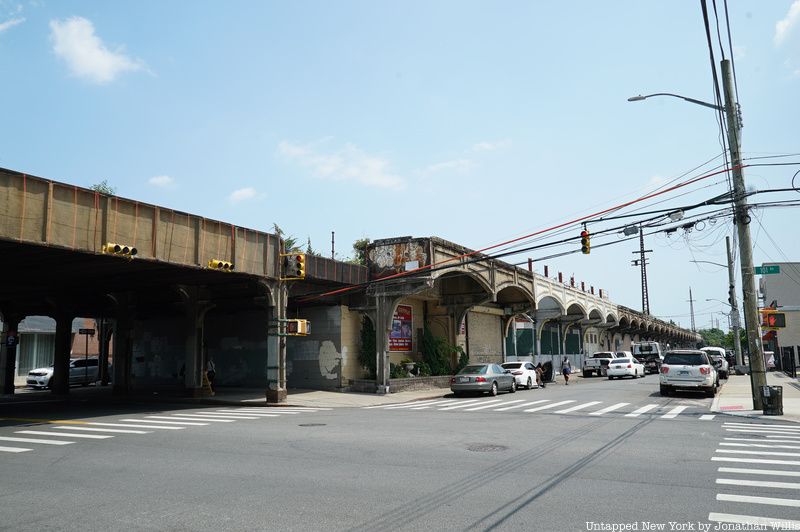
Hidden away on 101st Avenue in Ozone Park lies the ghost of a once bustling train station. This former Ozone Park Station was part of the Long Island Railroad’s Rockaway Beach Branch that fell slowly into bankruptcy and was put to bed indefinitely in 1962. The former station still exists above street level where many eager explorers have attempted to climb and see the dead tracks overcome with flora and scraps of once-used cables and dislodged rails.
While much of the old station is still viewable for those daunting enough to make the climb, two formerly notable additions to the abandoned tracks are sadly no longer there. One was a wooden model of the former Ozone control tower that was rumored to have been created by the NYPD so they could use spy cameras to watch over crime boss Gotti. Locals still claim that one Fourth of July the wooden tower was allegedly set on fire by anonymous vandals, destroying any evidence of the tower’s mysterious nature. Another dearly missed piece of the former 101st Ave Station was a giant spider that dangled eerily from an old signal tower. No one ever knew the origins of the street art, but it was beloved by many in the neighborhood until its eventual collapse and disappearance around 2004. Many long-time Ozone Park residents long for the day when it crawls back up and makes its elegant return. See images of the massive spider here.

A slice of the Caribbean lives and breathes in Queens where the Guyanese population is around 140,000 people. A large portion of Little Guyana is located within the neighborhood of Ozone Park. Primarily concentrated on Liberty Avenue (which was co-named “Little Guyana Avenue” in 2021 in a massive celebration attended by Mayor de Blasio), this culturally rich piece of Ozone Park is full of colorful flags, aromatic food shops, local artwork, and a variety of other features that showcase the vibrant culture that can be found in the hearts of its people.
Little Guyana spreads beyond Ozone Park’s borders, however, and is also located in Richmond Hill. The Guyanese-American population is showcased in this community passionately, bringing a sense of home and belonging to the second-largest group of foreign-born immigrants in Queens. But Little Guyana does not just celebrate Guyanese culture, it also leaves plenty of room for other Indo-Caribbean communities like those from Trinidad and Suriname. Little Guyana focuses on these cultures’ unique Asian influence stemming from Indian and Chinese indentured servants that had been brought to these countries during the time of the former British West Indies. This surprising mashup of heritages produces the culture, food, and community that can be found tucked away in Little Guyana today.
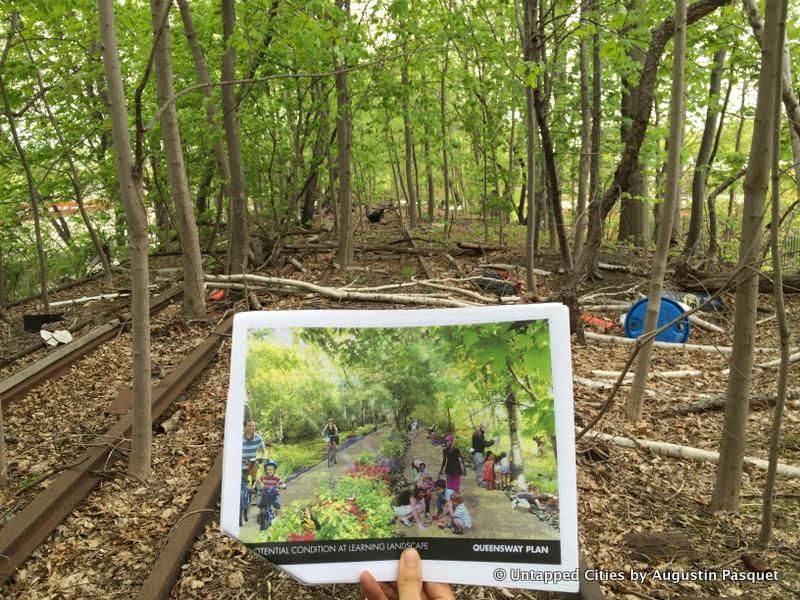
Speaking of rotting tracks from the old Rockaway Beach Branch of the Long Island Railroad’s past, the QueensWay project has a plan to give the tracks a new life. Originally proposed in 2011 by concerned neighbors living along the former line, the QueensWay is set to create a 47-acre linear park in Queens stretching 3.5 miles from Rego Park to Ozone Park where it ends. Despite undergoing over a decade of legal and logistical battles, the QueensWay made groundbreaking progress in 2022 at last when New York City Mayor Eric Adams announced a $35 million investment into phase one of the project.
The QueensWay is an asset to the borough that will bring greater amounts of greenspace and opportunities for social gathering for the more than 300,000 people who live within a mile of it. The project will also increase methods of alternative planet-friendly transportation such as biking or jogging between the Woodhaven, Ozone Park, Glendale, Richmond Hill, Little Guyana, Rego Park, and Forest Hills neighborhoods. Projects like this are becoming more popular across the city (for example the High Line) and the world as they address the climate crisis and the greater need for community spaces where city dwellers can enjoy nature.
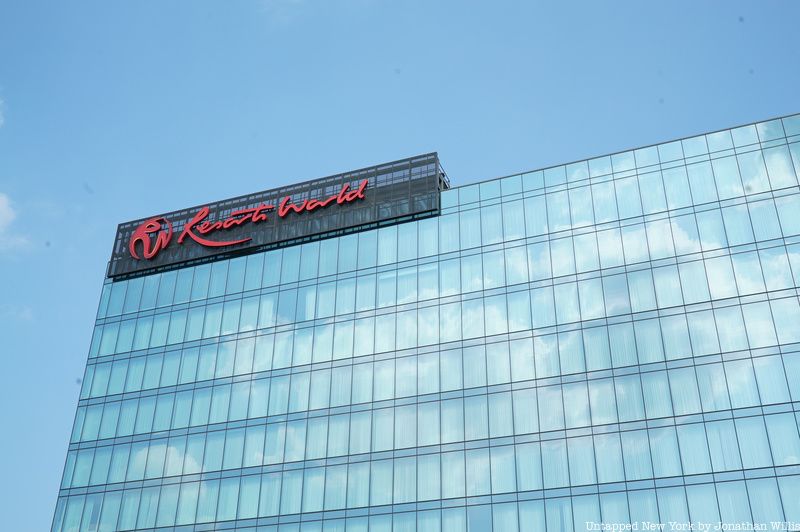
New York City may be a place where tourists come to spend a pretty penny or two, you can also win some here too! Nearby John F. Kennedy International Airport you’ll find the Resorts World Casino, the only casino in all of New York City. Resorts World sits tall and mighty at 110-00 Rockaway Boulevard in Ozone Park. The casino was a glamorous addition to the neighborhood made in 2011, and within 2012 alone brought in nearly $700 million in revenue from its over 10 million visitors, making it the top slot revenue generator in the U.S. at the time, according to the New York Gaming Association.
The casino is equipped with over 6,500 slot machines and games and is easily accessed via public transportation. Those interested can use either the Q37 bus, the A Train (arriving at North Conduit subway station), or the shuttle that takes visitors from Jamaica Station directly to the premises.
Next, check out 10 Secrets of Gowanus, Brooklyn!
Subscribe to our newsletter